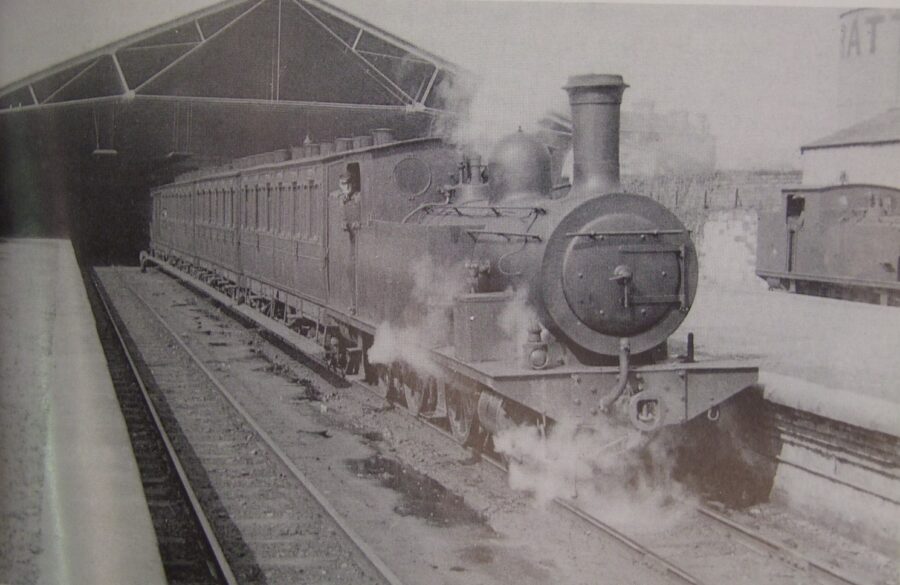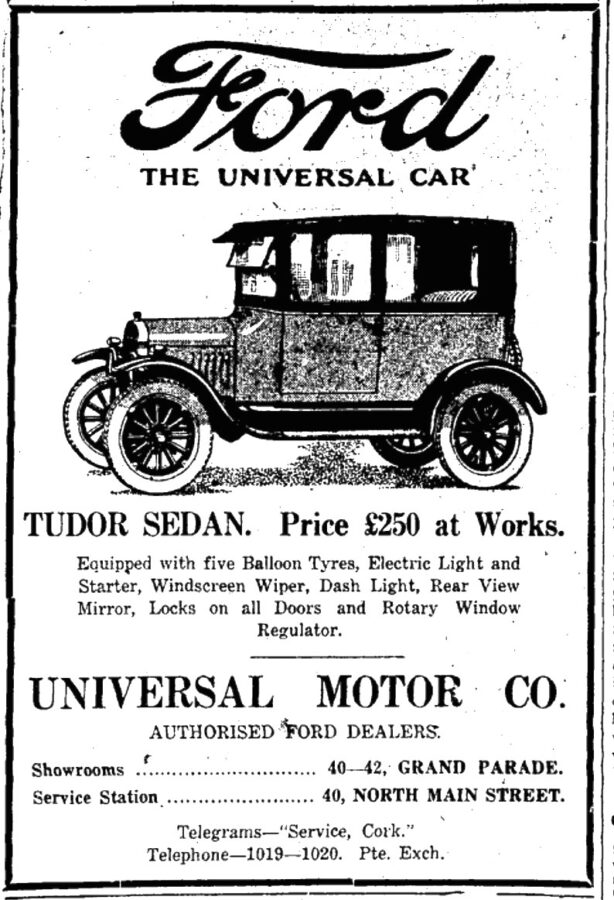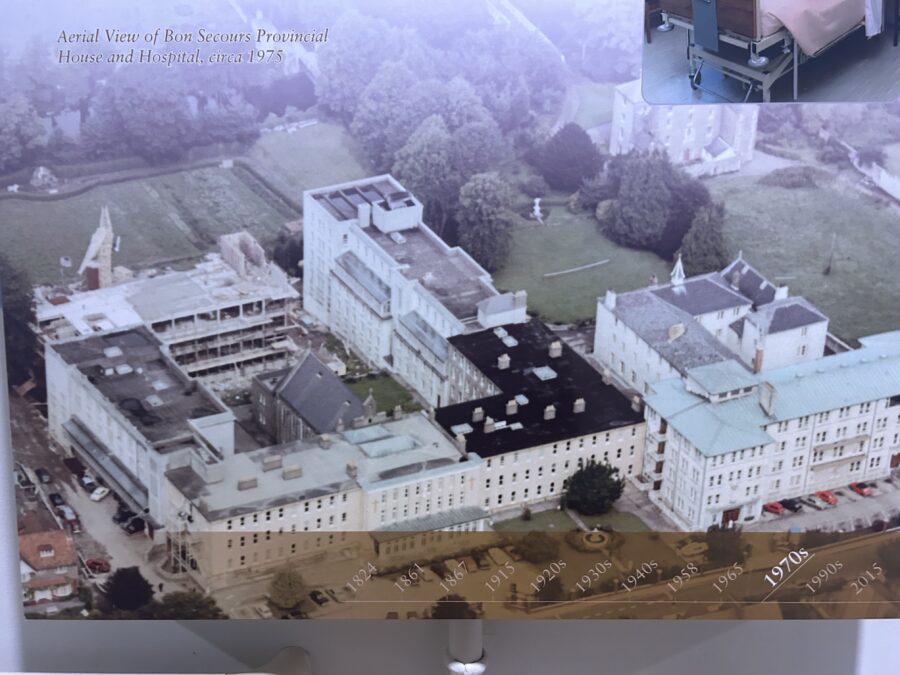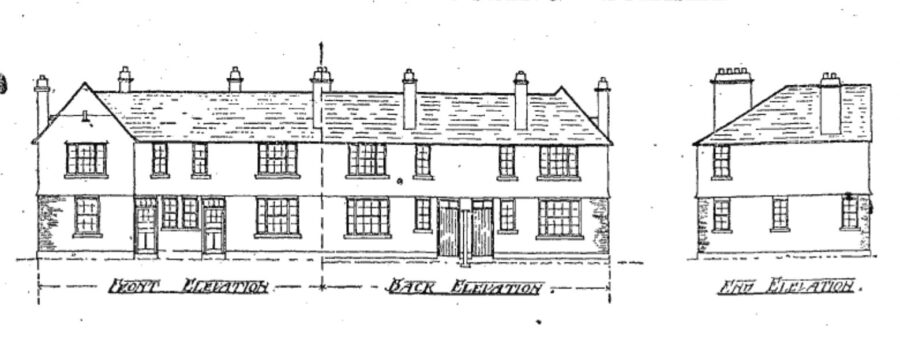
Kieran’s Our City, Our Town Article,
Cork Independent, 29 February 2024
Making an Irish Free State City – End of the Line
On 25 February 1924 the annual general meeting of the shareholders of the Cork, Blackrock and Passage Railway Company was held. Sir Stanley Harrington, Chairman, presided and read out a detailed report on the challenges facing the company. Annual AGM reports one hundred years ago and published by newspapers such as the Cork Examiner provide rich material to chart the rise and fall of the railway company.
It was in 1835 that the plan for a Cork Passage railway was first proposed by Cork based merchants. By the time it was built it was the third railway line to open in the country and the first in the south of Ireland. The line was opened to the public on Saturday 8 June 1850 and there was a service of ten trains each way at regular intervals.
In 1896, an Act of Parliament enabled the company to extend the line as far as Crosshaven. John Best Leith, Scotland received the contract for the regauging of the line. Works began in 1897. A new double track was laid between Cork and Blackrock, the only example of a double track in Ireland at the time.
At the 25 February 1924 meeting Mr Harrington related that a year on from the Civil War the damage on the span on the Douglas Viaduct had been repaired. Signal cabins at Rochestown, Passage and Monkstown had been rebuilt. The Blackrock cabin was in the course of rebuilding. The six carriages, which were burnt out, were replaced by new ones.
However, Mr Harrington’s core focus was on the difficulties to balance the company’s accounts. For several years the deficit on the account was accelerating. Reference is given that one of the serious reductions to profits was the withdrawal of the British military and naval forces from Cork and district. It was estimated at a loss of at least one million pounds annually to Cork.
From 1 January 1923 to 23 April 1923 closing down for goods and people traffic due to Civil War damage caused financial loss. The general dockers strike in Cork from August to November 1923 also caused a serious cost to the company. Rates and taxation created a large financial loss for the company, which ultimately led the way to the company’s demise a decade later.
At the AGM for February 1925, the financial losses had expanded. Persistent wet weather ruined the 1924 summer excursion traffic and ordinary traffic was disastrously affected by the depression in trade prevailing all over the South of Ireland. Furthermore, the closing down of Haulbowline and the dearth of work at Passage and Rushbrooke Dockyards, which used to bring the railway so much business, had seriously diminished receipts.
Reference is also made that on 13 August 1924, approval of the Great Southern Preliminary Absorption Scheme 1924 took place. Compensation was given to directors who suffered loss by the abolition of their office. Ultimately though, this took away a more localised focus and created a more centralised focus, whereby several railway companies came under the Great Southern Railway Company.
From 1925 to 1932 the Passage railway limped on with financial deficits. It still carried large crowds during the summer months, but the growing ownership of the motorcar ousted the popularity of travelling on the railway.
On 27 May 1932, it was officially announced that on and from 1 June 1932 all trains on the railway line between Crosshaven and Monkstown in both directions would cease to run. The Cork Examiner notes that the news was met with regret and that the train service between these points was up to some years ago “the main artery of holiday traffic at the popular seaside resort which it linked to the city”. The newspaper relates that within recent years the vast increase in the number of privately owned cars was responsible for a gradual but very noticeable falling off in the passenger service, and the advent of the buses was virtually the death blow to the railway.
In early September 1932, Mr Thomas Jones, chairman of the Passage Urban Council wrote a telegram to the Ministry of Industry addressing the concerns of in regard to the closing of the line. The response in a letter, and published by the Cork Examiner, outlined that the Minister had no power to intervene in the matter. The Minister was informed by the Railway Company, however, that their decision to close the line was reached after mature consideration of the fact that a continuous loss of approximate £4,000 per year in keeping it open; “The Company point out that the public have in a very large measure, deserted the railway services on that line for the more mobile, convenient, and attractive omnibus services, and that it is the intention of the Company to provide full and adequate alternative road services”.
In August 1933, one of the final stages in the abandonment of the Cork, Blackrock and Passage Railway between Cork and Crosshaven was reached when Messrs. Woodward, auctioneers were appointed in charge of the disposal of a number of lots of sleepers and rails from the route.
The old railway’s line’s re-opening in 1984 as a walkway was seen as cutting edge amenity addition in the city. Since then, it has gone from strength to strength in its number usage – its promotion of public health, walking and cycling, connecting the river and the estuary and its strong sense of place makes for an exciting public space in the years that come.
Strong political and public pressure have staved off such aspirations of a rail reboot function in the past decade in favour of Cork City Council developing a widened greenway, significantly improving its access ramps, and planting over 2,000 native species along the former rail route. A conservation programme in recent years restored the old stonework of the old Blackrock Station and replacing a long gone cast iron bridge. Currently there is also an ongoing work programme with local residents on how to bring the greenway from Rochestown to connect up with the Cork County Council section of the railway, which brings the line into the heart of Passage West.
Caption:
1242a. Cork Terminus at Albert Road, for Cork Blackrock and Passage Railway Line c.1925 (source: Cork City Library).


